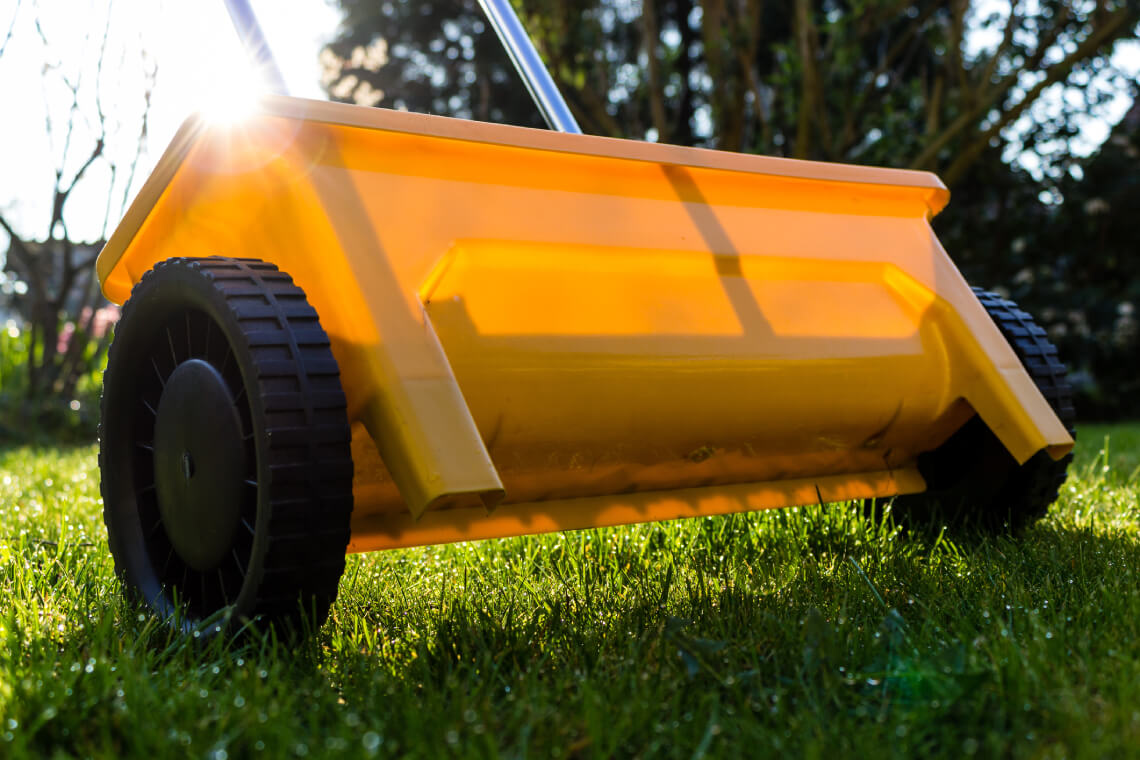Spring Lawn Fertilizer
What Do You Need to Know About Spring Lawn Fertilizer?
One of the more physically demanding aspects of home ownership is taking care of a lawn and maintaining it throughout the year. Different seasons will require different types of treatments, tools, and chemicals to make sure your lawn stays healthy and lush year round. No time, however, is more important in the yearly life cycle of a lawn than the spring.
There is a lot of information available online about when and how you should fertilize your lawn in the spring, and not all of it is in agreement. Let’s take a couple of moments to go through some of the more popularly discussed ideas and boil down all of this information in to some easy-to-read and understand concepts.
When Should You Fertilize Your Lawn During the Spring?
Though their seems to be some debate on exactly how often you should use fertilizer on your lawn throughout the season, there is a little more consensus, at least, on when you are supposed to start. Most experts agree that you should give your lawn its first amount of fertilizer in the middle of April.
You want to wait until the temperature is in the neighborhood of around 55 degrees or higher. While there are several very easy ways to figure out the temperature outside by using an outdoor thermometer, a nice and informal way of confirming it is a good time to fertilize is when the grass starts to grow and the flowers begin to bloom in your neighborhood.
How Much Fertilizer Should You Use on Your Lawn?
This is one of those questions that, in order to answer it, really comes down to how much you trust the products you buy. Many lawn care professionals will tell you the recommended rate on the back of the fertilizer packages you have bought recommend using significantly more fertilizer than you actually need. This would stand to reason, as a fertilizer company’s job is to always be selling more fertilizer so they can keep increasing profits.
To account for this possibility when you are trying to fertilize your lawn, use half of the recommended amount of fertilizer for your first couple of applications. You will then be able to add more for future applications if you did not like the results you received. To make sure your soil is actually getting the most out of your fertilizer of choice, use a soil testing kit to make sure your lawn is getting the nutrients it needs to continue to grow throughout the spring.
Make Sure You Are Watering Your Lawn Correctly
In addition to accounting for the amount of fertilizer you will need for your lawn during the spring, another factor which must be taken into consideration is the amount of water your lawn needs. This means you will need to come up with a water plan that has been specifically designed for your lawn.
If you water your lawn using an automated sprinkler system, you can operate on a cycle of watering the grass every six weeks. If you do not have an automated sprinkler system, you can add two weeks to the schedule and extend things a little. You should also take note of how your water and fertilizer interact with one another. Granulated fertilizers require the lawn to be watered before they are applied, as the moisture helps break down the granules into the grass, so always check the label and be sure your watering schedule and fertilizing schedule are in synch.
Combine Pre-Emergent Herbicides with Your Fertilizer
Once you have successfully applied your fertilizer to the grass and then watered it, the next step is to actually begin treating your lawn as it starts to grow. You are going to want to use a pre-emergent herbicide to make certain that crabgrass and other type of annoying weeds do not begin to take root on your beautiful lawn.
It is important to make sure that you are using a pre-emergent herbicide that does not have a negative effect on your lawn. They are not all created equally, and certain combinations of chemicals, when they interact with one another, can actually harm your grass. Spend some time experimenting with different combinations of herbicides and fertilizers until you find one that works for you.
Finding the proper amount of spring lawn fertilizer for your lawn, watering it correctly, and then treating it with the right chemicals afterwards is a combination of art and science. After a while, you will eventually find a combination that works for you, and your lawn will begin to grow beautifully.
Meta description (160 characters): Knowing when and how to apply spring lawn fertilizer is an important part of keeping your lawn looking beautiful and healthy. Read our new blog to learn more.
Facebook/LinkedIn: Keeping your lawn neat, trim, and beautiful is one goal every homeowner shares, no matter what part of the country they live in. Read our new blog post today to learn how to make the most of the spring season and how to help your lawn grow.
Twitter: Spring is the time of year we most associate with growth, and your lawn is no exception. Check out our new blog post to learn the best ways to #fertilize and tips and tricks for a beautiful lawn.

